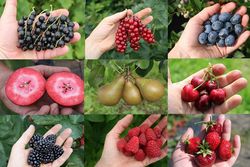 The following considerations begin with the observation that berry plants sell much faster on the market than fruit trees. But why is that, what are the reasons for it? And wouldn't there perhaps also be fruit trees that we could promote like berry plants with the right sales arguments and the right production? Can we “berrify” fruit trees? And because it sounds nice, we have invented a new word and concept: the “berryfication” of fruit trees...
The following considerations begin with the observation that berry plants sell much faster on the market than fruit trees. But why is that, what are the reasons for it? And wouldn't there perhaps also be fruit trees that we could promote like berry plants with the right sales arguments and the right production? Can we “berrify” fruit trees? And because it sounds nice, we have invented a new word and concept: the “berryfication” of fruit trees...
Why berry plants sell faster than fruit trees...
First, of course, we have to ask ourselves why berry plants sell so much better than fruit trees. Here, on the one hand, we have to discuss the objective reasons as well as the subjective, psychological reasons that make buying fruit trees so much more difficult than buying berries.
Objective reasons for the greater willingness to buy berry plants:
- Space requirements: berry bushes usually need less space than fruit trees and accordingly it is easier to find a spot for them. Fruit trees are considered large, while berries are small.
- Price: berry bushes are generally cheaper than berry plants in terms of price; especially the lower entry prices for smaller plants are significantly lower than fruit trees. In many cases it is also technically difficult to produce a similarly small plant (in a 1-3 L container) for fruit trees. An important reason for this is also the grafting, which is necessary for the production of true-to-type and fast-bearing fruit trees for many fruit species.
- Architecture: fruit trees tend to have a trunk. This must somehow be maintained; it must be supported and above this comes the crown, which must be pruned. Berry bushes tend to have multiple shoots and remain so. Here the expectation is quite clear and simple: plant, let grow and harvest...
- Fruit, fruit size: berries are small; they can be snacked on and picked while passing by. The enjoyment of the fruit trees is not so informal. The fruit from the different species have to be picked separately, so to speak, then stored and eaten/processed.
- Fast success/instant gratification: berries bear fruit quickly, at best after a few months, almost certainly after a year. Fruit trees need time.
- Duration of cultivation: fruit trees live for a long time and with berry bushes you don't even think about it that carefully. A long-term investment needs to be well, very well, considered. But here we are already slowly moving into the psychological reasons for preferring berry plants. Let me tell you a little story: about 15 years ago, we regularly organised information evenings or day events in garden centres or other sales outlets. I was regularly asked by older customers how long they would have to wait for a fruit tree to be harvested and not infrequently the discussion ended with the customer saying that the children and grandchildren would probably bring in a good part of the harvest...Of course, this can also be a reason for buying; but since we are human beings and prefer to think of our own lives rather than the lives of others afterwards, it is more of an obstacle.
Subjective, rather psychological reasons for the greater willingness to buy berry plants:
Here, of course, we will move away from the hard facts, the clear differences between berry plants and fruit trees. But in my experience, these psychological reasons tend to be even more important than the objective reasons. In any case, you have to know them in order to be able to argue against them if necessary and to sell fruit trees quite specifically as berry plants or at least like berry plants.
- Simplicity: berry bushes are considered simple, they only need to be planted once – and then they quickly bear fruit. With fruit trees, even planting with a stake or scaffolding is a bit of a science.
- The fear of pruning: everyone knows that fruit trees have to be pruned artfully, but with berries this is not necessary or, above all, not so conscious. With berry bushes, consumers have a much simpler image in mind: just plant them, let them grow and then the fruit will come.
- Investment commodity/consumer product: this assessment of berries as a consumer product and fruit trees as an investment commodity has of course to do with the price points mentioned above, but also with the assumed duration of cultivation. A consumer product is simply bought here and now, even spontaneously, without thinking too much about the consequences. With an investment commodity, everything is considered in a much more differentiated way, and above all, the spontaneous decision tends not to be allowed.
How do fruit trees become berries and thus sell faster and more often?
Of course, we have not yet found the 'philosopher's stone', the solution to the riddle of how a fruit tree becomes a berry plant, but we have succeeded in developing a framework of criteria that fruit trees must fulfil for possible berryfication and which arguments we must emphasise:
Fruit trees suitable for berryfication must fulfil at least four to five of the criteria developed above in order to be positioned and also sold as berry-like fruit trees. We enumerate the criteria here again collectively:
- Small, requiring little space
- Rather small fruits, suitable for snacking, enjoyment without work
- Shrubs rather than trunks, ungrafted rather than grafted
- Lower price points possible
- Quick onset of yield
- Short cultivation period, success comes so quickly that one does not even think about a period of more than 5-7 years
- Simple cultivation, but also simple conception
- No pruning necessary, at least not in the first few years
- Positioning as a consumer product
Berry fruit trees in the current Lubera Edibles range
Do such berry fruit trees even exist? Of course – otherwise I wouldn't have written this article.😉 The first candidates are certainly genetically small-growing dwarf fruit trees and columnar trees.
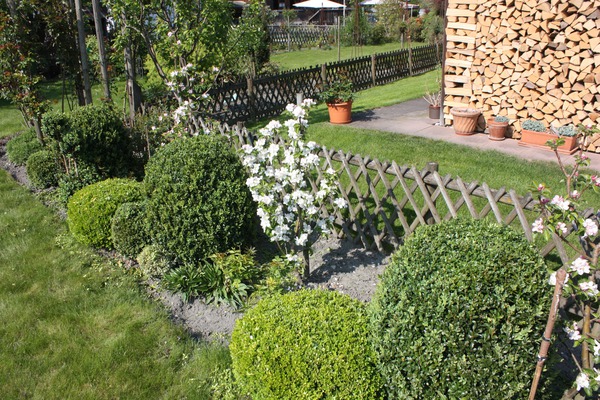
Picture: Dwarf apple tree Maloni® Lilly® - in a typical garden setting. Here planted as a fruit-bearing shrub.
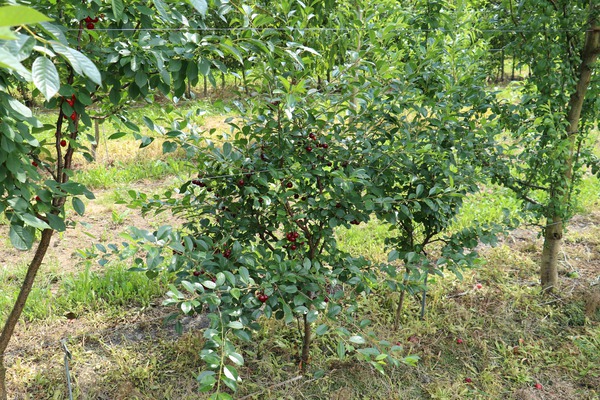
Picture: Shrub cherry 'Carmine Jewel' - With a final height of 2 m, the term shrub is much more appropriate than tree.
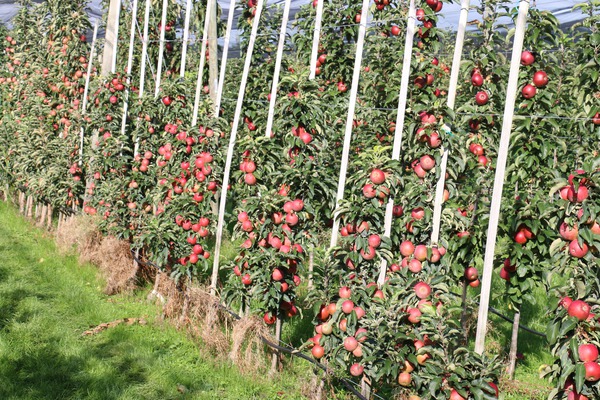
Picture: The columnar growing Malini® apple trees often do not grow taller than 2 m, especially the variety Malini® Gracilis® shown here, with a final height of 150 cm, remains as small as a Maloni® dwarf apple.
What about figs? First and foremost, fig trees that bear fruit twice a year and also produce small fruit that can be eaten directly without loss of juice are suitable here. Actually, we should start to talk specifically about berry figs... Already now, figs are well integrated into the berry range, we just have to strengthen this tendency specifically with the right varieties and with additional arguments; that figs are heading in this direction is also shown by our extremely strongly growing sales figures.
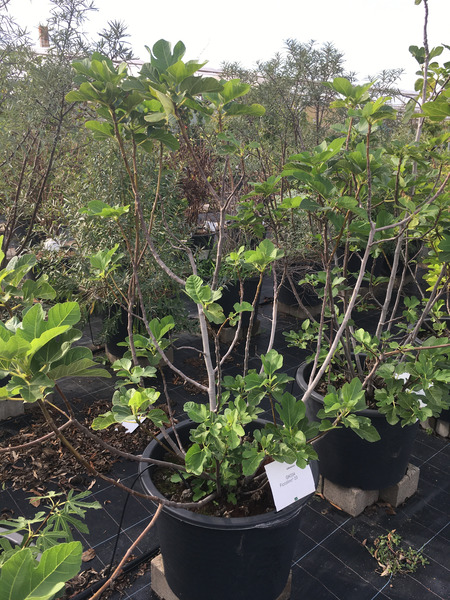
Picture: The naturally weak-growing Gustis® Ficcolino® fig. Ficcolino® branches out very well without pruning and forms beautiful compact shrubs. Shown here in the variety testing in Strullendorf.
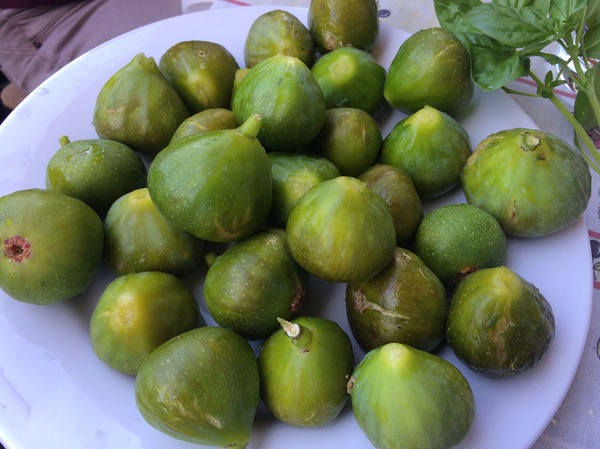
Picture: Fruit of Gustis® Ficcolino®. Rather small compared to other figs, but very large compared to most berries.
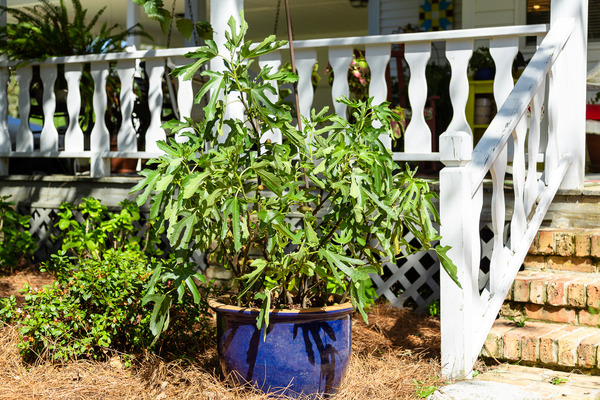
Picture: Fruit fig 'Little Miss Figgy' ('LMF01' PBR) grown in a pot. Also a comparatively weak grower and good natural branching.
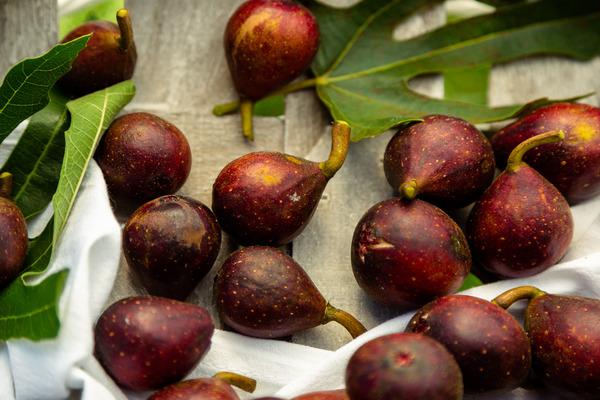
Picture: Fruit of 'Little Miss Figgy' ('LMF01' PBR)
Our sister company Lubera AG has been selling shrub cherries in its online shop for some years now, in a similar quantity as berry plants. They are the ideal berry fruit trees for various reasons: small, shrubby growth, easy to cultivate...
More information on berryfication
Read more about the aspects of berryfication in the next gardener's letter. We will specifically present some fruit species and varieties suitable for berryfication. And of course we will also report on the efforts we are making in propagation research and breeding for the berryfication of fruit trees.
